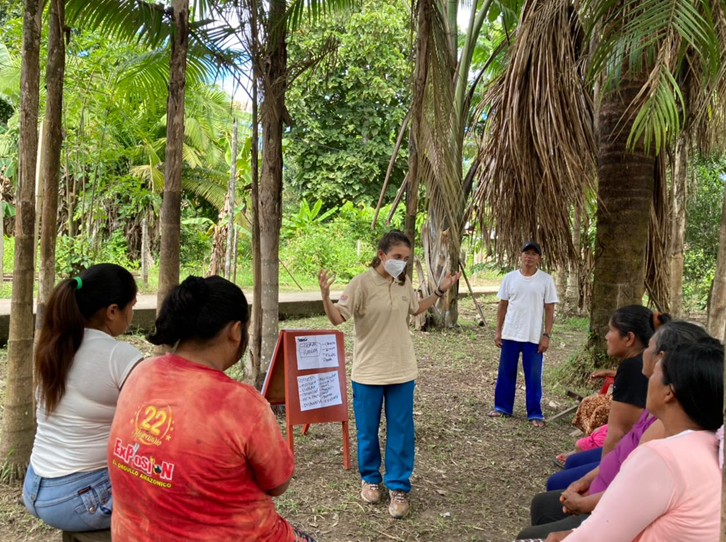Explaining Mental Health as a Concept in the Amazon
In the third of the blog posts written by Amazon Hope Medical Programme (PMEAP) Project Coordinator Román Rodriguez, he talks about the challenges faced by project workers in the region when it came to explaining the concepts of mental health and wellbeing to community members who'd never heard of or come across these ideas before.
Blog 3: The Language
In the Loreto region, the number of mental health services is very scarce and, in the rural communities where the PMEAP works, it is non-existent. This is despite the fact that these community members have been living with diverse emotional, cognitive, and sociocultural issues for a long time.
When the decision was made to implement a mental health service in the PMEAP, the first barrier was people's lack of knowledge about what mental health is, what a psychologist does and how they can help. This is because these community members had never received that kind of attention before.
For many people, it was difficult to talk about problematic aspects of their current or past life because they had never done it before.
Another major barrier was the fact that people prioritised physical healthcare because they viewed their emotional symptoms as less urgent or important, that "will heal over time" or "pass away on their own."
Likewise, there is a gender barrier, since many people considered that speaking to alleviate worries or sadness was something “for women." They felt that men do not speak and don't cry, an attitude which in itself generates many cases of family violence or alcoholism.
Because of these pre-existing factors, the team of psychologists could not wait for people from the communities to get on the boat to ask for mental health care. Instead, they needed to go to the communities to promote the service. Thus began the mental health education actions in the communities.
Project workers conducted informative talks and educational workshops in which they did not use technical terms, but instead gave examples of the types of problems related to mental health such as;
** Lack of good-quality sleep **
** Feeling worried, sad, or nervous for a long period of time **
** Having problems at home **
** Having issues with alcohol **
** Experiencing physical pain constantly and for no apparent reason **
** Feeling really upset for most of the day **
** Holding no hope for the future **
They were told that the mind or spirit also "hurt" in this way and, like the body, must heal. They were also told that this healing is done through a conversation, being listened to, and receiving encouragement and advice that can help.
After these initial promotions, community members began to request the service and benefit from it. Likewise, the project team identified people who did not request the mental health service but who obviously might need it, such as;
** Adolescents who were pregnant or had children **
** Those people with high blood pressure **
** People experiencing recurring pain or sleep issues **
** People dealing with PTSD or suffering through traumatic situations **
These people were referred to psychology where project workers informed them of the services and why they might need some mental health. These community members then granted their authorisation to go on and receive care from the team. In all cases, the service was promoted in a respectful and informed manner.
In this way, it was possible to overcome the barriers and stigmas in terms of mental health in the communities:
** Identify the problems **
** Understand the socio-cultural beliefs **
** Provide information to community members **
** Motivate and encourage participation **
** Provide the service in an empathetic and respectful manner **
